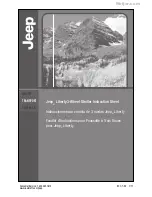
L90 LINE CURRENT DIFFERENTIAL SYSTEM – INSTRUCTION MANUAL
8-1
L90 Line Current Differential System
Chapter 8: Application of settings
Application of settings
This chapter provides example(s) of use.
8.1 CT requirements
8.1.1 Introduction
In general, proper CT selection is required to provide both adequate fault sensitivity and prevention of operation on high-
current external faults that can result from CT saturation. The use of high-quality CTs (such as class X) improves relay
stability during transients and CT saturation and can increase relay sensitivity. A current differential scheme is highly
dependent on adequate signals from the source CTs. Ideally, CTs selected for line current differential protection are based
on the criteria described as follows, which presents the high-level CT requirements to avoid saturation and to provide
undistorted CT secondary current.
Check the capability of the CTs, and the connected burden, as follows:
1.
The CTs should be class TPX or TPY, or IEC class 5P20 or better. Use class TPZ only after discussion with both the
manufacturer of the CT and GE Multilin.
2.
The CT primary current rating should be somewhat higher than the maximum continuous load current, but not too
high relative to the minimum fault current because the differential element minimum pickup setting is 0.2 × CT rating
for the phase differential and 0.1 x CT rating for ground differential. Too high CT primary current rating limits sensitivity
of the differential element for high-resistive faults.
3.
As per the IEEE C37.110-2007 "Guide for the Application of Current Transformers Used for Protective Relaying
Purposes," the CT must be capable of a secondary saturation voltage V
K
to avoid AC saturation:
V
K
> I
S
x Z
S
Eq. 8-1
where
I
S
is maximum CT secondary fault current
Z
S
is total secondary burden Z
S
= R
CT
+ 2 x R
L
+ R
R
4.
As per the IEEE C37.110-2007 "Guide for the Application of Current Transformers Used for Protective Relaying
Purposes," the CT must be capable of a secondary saturation voltage V
K
to avoid DC saturation:
Eq. 8-2
where
















































